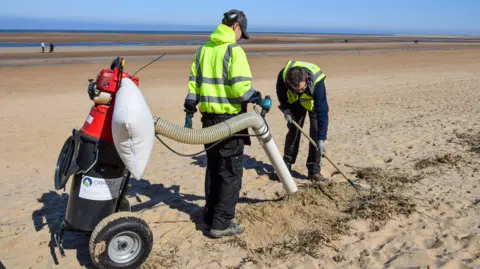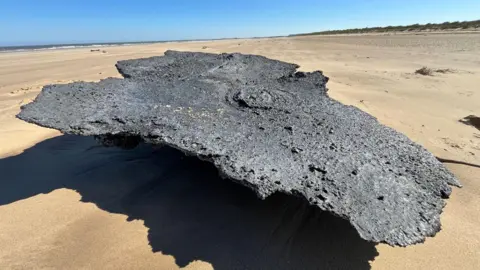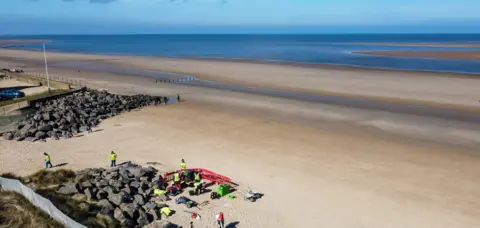Vacuum used to remove North Sea collision plastics
 West Norfolk Council
West Norfolk CouncilA specialist vacuum device is being used to lift plastic pellets washed up on beaches following a collision involving two ships in the North Sea.
It is thought the nurdles entered UK waters when the Solong cargo ship struck the Stena Immaculate oil tanker off the coast of East Yorkshire on 10 March.
The Borough Council of King's Lynn and West Norfolk has employed a waste management contractor to clean up the beaches and says it will be seeking to "reclaim the costs from the ship insurers".
The National Trust, which manages part of the Norfolk coastline, says it "remains deeply concerned" about the pellets, which could continue to be washed up "for months to come".
 Shaun Whitmore/BBC
Shaun Whitmore/BBCNurdles are balls of plastic resin used in plastics production. They are not toxic, but can put wildlife at risk if ingested.
Since their discovery on 20 March, clean up efforts have been under way. Although larger pellets have been removed, it is hoped that the vacuum will better target smaller pieces.
Sandra Squire, an Independent Partnership councillor and cabinet member for environment and coastal, said: "This machine should help as we move to the next phase of our beach clean-up of this pollution.
"I would like to remind our residents that, although nurdles are not toxic, they can present a risk to wildlife if ingested.
"Please keep dogs on leads for now. Don't touch any nurdles you find."
 West Norfolk Council
West Norfolk CouncilVictoria Egan, general manager for the National Trust on the Norfolk Coast, added: "With tides turning this week, [the contractor's] use of a mechanical vacuum to collect and remove some of the loose nurdles from the strandline comes just in time.
"We remain deeply concerned about the long-term impact of this plastic pollution on the Norfolk coast and its wildlife, which could continue to be washed up for weeks and months to come."
The vacuum was used at Brancaster and Titchwell earlier this week and Holmes to Old Hunstanton on Friday.
Follow Norfolk news on BBC Sounds, Facebook, Instagram and X.
